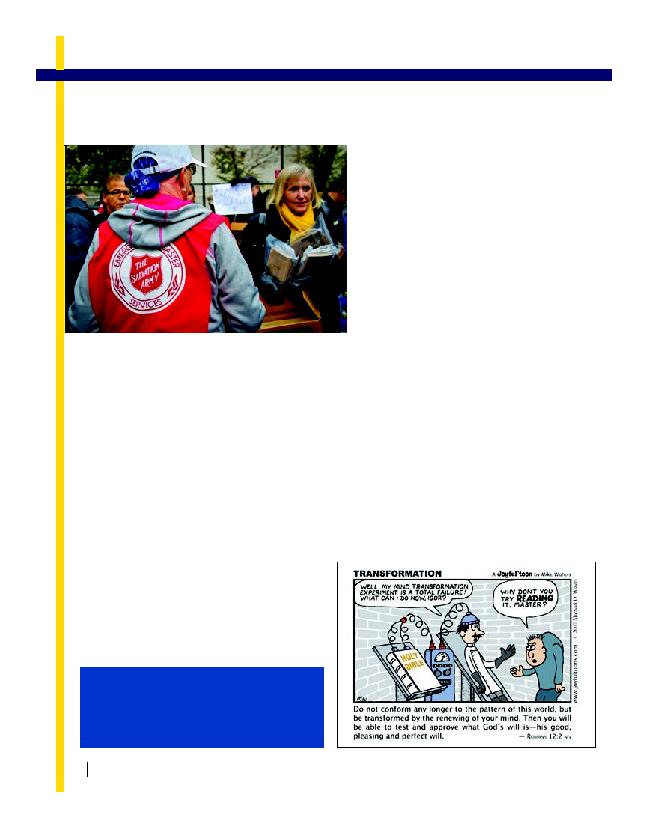
made landfall in late
October, it was the larg-
est Atlantic hurricane
on record with winds
spanning 1,100 miles.
The storm had distinct
consequences--consid-
erable storm damage,
flooded subways, closed
bridges and tunnels, no
electricity, no water, lim-
ited gasoline, thousands
of people impacted,
millions of people shel-
tered in place. Since 911
the Army's Emergency
Services of Greater New
York has been prepar-
ing for disaster response
and recovery efforts in
concert with public and
private organizations
and responders. As the
hurricane hit, emergency
personnel stepped up to
vice gaps.
community are those
with special needs, in-
cluding medically needy
individuals and frail
seniors. For 15 days Sal-
vation Army responders
provided over 40,000
low sodium, vegetarian
and Kosher meals for
evacuees housed in all
eight special needs shel-
ters scattered through-
out New York City.
compromised, Greater
New York's fleet of Thrift
Store trucks and driv-
ers formed a continuous
convoy that delivered
shelter meals and emer-
gency supplies to gov-
Salvation Army points of
distribution (PODs). The
fleet also unclogged in-
ner city streets from a
sea of plastic bags filled
with used clothing, most
of which was unuseable.
Drivers instead distrib-
uted clothing vouchers
for Salvation Army Thrift
Stores so storm victims
could secure clean and
safe clothing as quickly
as possible.
round as a Salvation Army
shelter for chronically
homeless women became
the staging area for emer-
gency supplies. Pallets
upon pallets of products,
from clean-up kits to dia-
pers, were both donated
and purchased for use by
all Voluntary Organiza-
tions Active in Disaster
(VOAD) agencies and
government partners. The
coordination of supplies
by the Army was a testa-
ment to the multi-sector
inter-agency communi-
cation and collaboration
that has developed over
the years.
ing programs, mobile
canteens, responder
support, shelter support
and supply distribution,
all served with the emo-
tional and spiritual care
that The Salvation Army
is known for, aided those
in need throughout the
Mid-Hudson region and
on Long Island. Disaster
relief partners, including
the American Red Cross,
Southern Baptist Disas-
ter Relief, United Meth-
odist Committee on Re-
lief (UMCOR) and a host
of local groups worked
side by side to meet the
needs of all New York
communities.
communities impacted
by Sandy, it has no exit
plan. The community re-
covery process will now
begin. Mandated by mis-
sion, Salvationists will fill
the gaps whenever pos-
sible in the months and
years ahead.
Services Director, Greater
New York